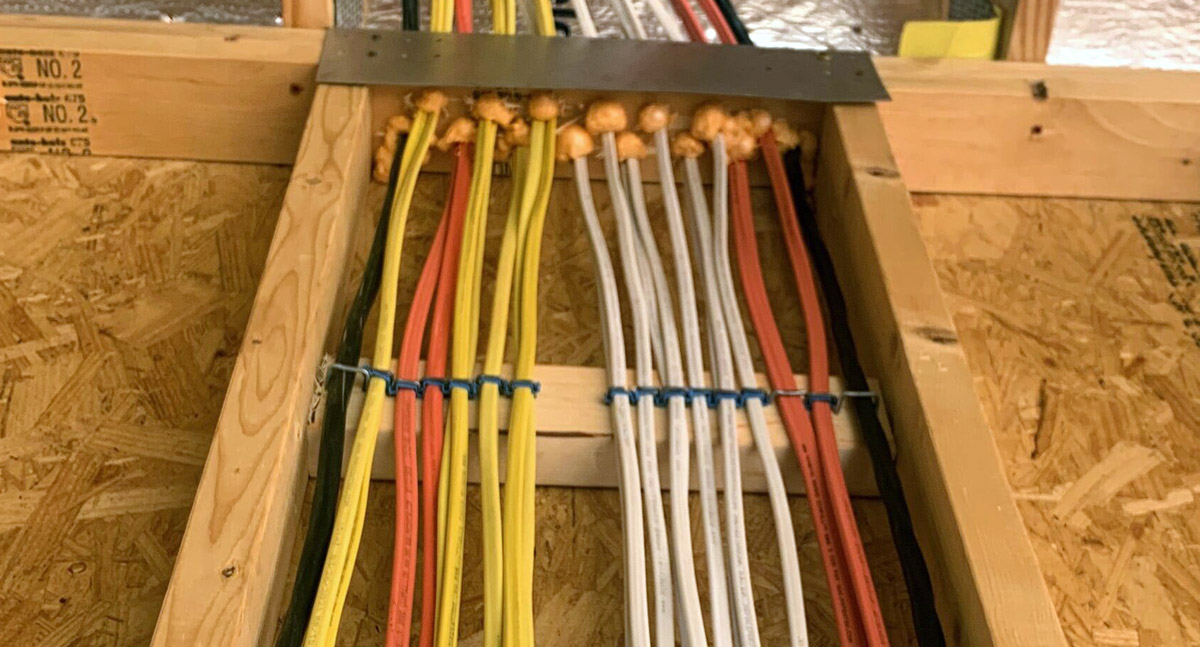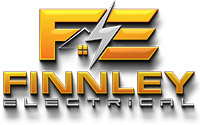Electricians refer to an electrical home run as the conductors coming from the circuit breaker to the initial connection point located on that particular branch circuit.
If you wish to have isolated fixtures, dedicated outlets or any high-load items powered up separately from the breaker panel, then a home run line should be used. This is a direct connection that does not stop along the way and links the fixture directly with your circuit breaker for a reliable power supply.
Important Considerations with using Electrical Home Runs
Home runs are beneficial in reducing electrical noise. Electrical noise is an unwanted external signal that can interfere with the normal operation of a circuit. Home runs are designed to minimize this risk by providing improved grounding and thus eliminating the potential for unnecessary interference. Here are four important considerations when installing electrical home runs:
- Heat. Don’t bundle more than 3 home run cables together. If you excessively bundle too many home runs together you risk generating too much heat which can become a safety issue. Whilst it is perfectly fine to utilise plastic conduit to house your home runs, don’t bundle too many conductors within the same conduit. Jackets could melt off your wires, leaving copper-to-copper conducting.
- Protect your home runs from physical damage. You should be careful to protect your home runs from physical damage both during installation and after installation. Make sure you protect the outer jacket and inner jacket of the wire. Abrasion will cause the wires to fray and be a potential safety risk. For example, there are particular Australian wiring codes that outline the space that should be provided between manhole openings (attic openings) and electrical conductor wiring to ensure physical damage to the wiring doesn’t occur. When installing electrical and data cables in a new building, it is essential to place the wiring after that of mechanical systems such as Plumbing, HVAC and more. This ensures that any future work will not be hindered by having to cut out or damage existing electric lines.
- Secure and support your home run. When a home run is pulled, it should have some workable slack. It isn’t a guitar string. It doesn’t need to be tight. For example, plumbers may need to route a toilet line near the wire, and having a little bit of slack left in the line will allow it to be moved. Don’t make it too loose – it doesn’t need to be messy, just don’t make it ultra-tight. The wiring should be supported within every four and a half feet.
- Label your home runs. When installing your electrical home runs, be sure to label them appropriately so they are easy to terminate in your electrical panel. It will prevent you from needing to retrace wires and will make any updates/changes in the future much easier.
To an electrician, the home run is the hot feed between the electrical panel and each room/circuit in a home. While home runs mostly follow the same rules of running wire that apply throughout the house, there are some considerations you need to keep in mind such as not bundling more than 3 home runs together. With proper installation of your electrical home runs you will be able to ensure that all of your devices are safely powered up with no interference along the way.


